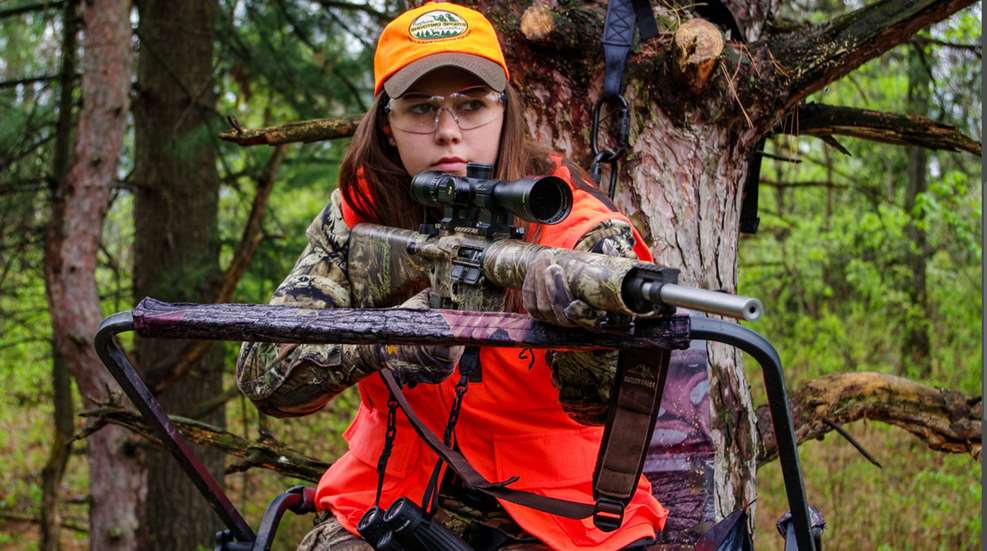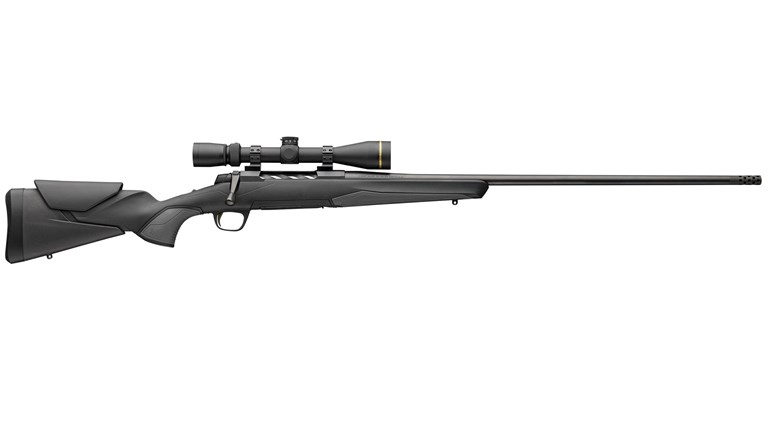
My daughter shot her first deer when she was 8 years old, using an AR-15 chambered in .223 Rem. She had some experience hunting squirrels with iron sights and using a riflescope, and she’d had plenty of range time—plus she was an emotionally mature kid who had been around hunting her entire life. We knew she was ready for it.
My husband and I had debated about whether to buy her a “starter” rifle, like the traditional .243 with which so many youngsters kill their first deer, but she was so petite that even the youth models were a little long for her. Then we realized that we already had a great deer rifle for a small-framed shooter in our safe: an AR-15.
Without telling the whole story, I’ll just say that she dropped her deer with one shot at about 80 yards. It did not take a single step, and of course, that kid was on cloud 9 for a week or more. That hunt firmly convinced me that the AR-15 is an ideal first deer gun for a kid, and here are three reasons why.
1. They’re Adjustable
Assuming your AR-15 has an adjustable stock, as most do these days, the length of pull can be shortened to fit almost any shooter. If the stock has an adjustable comb/cheek piece, even better. What’s great about this is that the gun will fit the kid as they grow—so if you’re buying a new AR-15 specifically for this purpose, you won’t have to worry that your son or daughter will outgrow their “starter rifle.” It’ll always fit, and because the AR-15 is so modular and customizable, they can mold this into any configuration they want as they grow up.
With the adjustable stock collapsed all the way, my AR-15 (a hunting model from Rock River Arms) fit my daughter perfectly. With a typical adjustable stock collapsed as short as it will go, you can achieve a length of pull around 10 ½ to 11 inches, which is at least a full inch shorter than even the shortest Super Bantam youth bolt guns on the market.
2. They Shoot a Light-Recoiling but Capable Cartridge
Recoil is a concern for a small-framed shooter, especially a kid who is going from .22 LR squirrel guns to deer-capable cartridges. The .223 Rem. doesn’t generate much recoil, and in a semi-auto firearm, it’s barely noticeable. You might hear some traditionalists grouse that the .223 isn’t enough gun for whitetail deer, but they’re just flat-out wrong. The cartridge, using the proper load and projectile, allows for more than enough terminal velocity at reasonable ranges to allow for good penetration and expansion. In short, the .223 Rem. can reliably kill deer and is really easy for a kid to shoot.
3. They’re Heavy
For my daughter’s hunt, we knew she’d be sitting in a ground blind with a tripod-style gun rest that held the gun securely, and of course, my husband could carry the gun into the field for her, so weight was not a factor. In fact, the extra weight of a hunting-style AR-15 is a major plus, as it helps further reduce felt recoil.
What to Know
If you’re considering an AR-15 for your child’s first deer gun, there are a few things you need to take into account.
1. Know the Laws
There are a few states where the .223 Rem. is not legal for deer hunting, and there are a few states where you’re not permitted to use a semi-auto rifle for big game. Be sure to look up your state’s minimum cartridge requirements and laws regarding legal methods of take.
2. Pick the Right Ammo
The .223 Rem. comes in a huge variety of loadings these days, and not all are appropriate for whitetail-sized game. You’ll find projectiles ranging from about 40 up to 75 grains or more, and you want a good hunting bullet toward the mid and upper end of that range. In my daughter’s case, we loaded her AR with Winchester Razorback ammo with a 64-grain bullet, which was designed for deep penetration and wide expansion on tough wild hogs. It worked very well on deer, but that was 10 years ago, and better ammo is available today, specifically designed to work on deer-sized game, including Winchester’s Deer Season (64 grains), Federal’s Barnes TSX (55 grains), and Hornady’s Black with the InterLock bullet (75 grains; technically for the 5.56 NATO only; see the difference between it and .223 here).
3. It’s All About Shot Placement
That statement is true no matter what cartridge you’re hunting with, but the .223 is admittedly on the lighter/smaller side compared to more traditional deer-hunting cartridges. Make sure your child only takes good, clear, ethical shots to the vitals. No neck-shooting, head shots, “Texas Heart Shots” or other slim-margin stuff.
4. Know Your Kid and Your Range
Make sure your child is well-practiced at the range before you hit the woods, and know how far they’re capable of shooting well. With the .223, even with today’s excellent hunting loads, it’s wise to keep shots to 200 yards or less—that’s if your kid is a good shot at that distance. If you have options, I like to set a kid up for a shot of 100 yards or less for their first couple of deer.















































